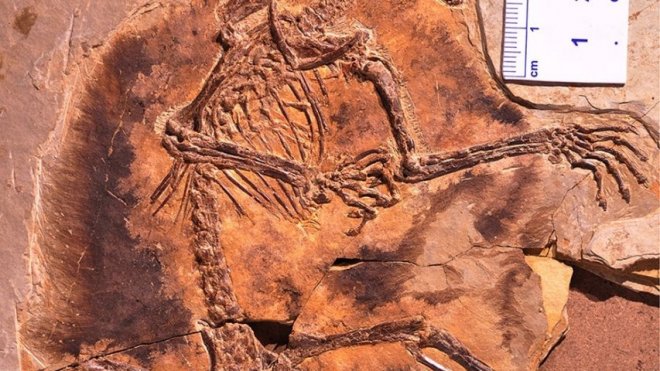
Fossil footprints discovered at Crete in Greece, challenge the age old beliefs surrounding human evolution. According to experts, these 5.7 million-year-old footprints are likely to belong to the "hominins" or "great apes".
The footprints from Trachilos, in western Crete, have a human like form. The big toe is similar to the human structure, and contains the "ball" on the sole, which is absent in the apes. The sole of the foot is shorter than the Lateoli footrpints, footprints of the Tanzanian ape and appears to be from a more primitive era than the Lateoli fossils. Moreover, they were made on a sandy seashore or river delta, while the Lateoli was made on volcanic ash.
Gerard Gierlinski, paleontologist at the Polish Geological discovered the footprints on a holiday.The Trachilos footprints being 5.7 million years old are younger than the "Sahelanthropus" fossils from Chad, which are 7 million years old and are contemporary to the "Orrorin" fossils from Kenya. The newly found footprints are millions of years older than the "Ardipithecus" - the fossils of an extinct ape species, with its ape like feet. This contradicts the belief that "Ardipithecus" is a direct ancestor of the later apes.
All fossils of the "great apes" older than 1.8 million years, are believed to belong to Africa, which is considered their home. The Trachilos footprints are securely dated as they contain marine microfossils from over and underlying beds and lie below a sedimentary rock, which was formed when the Mediterranean Sea had dried out partially, 5.6 million years ago.
Gierlinski found the footprints when he was on a holiday in Crete in 2002. He identified the footprints to be of mammals' but ceased to investigate any further. In 2010 he returned to the site with Grzegorz Niedzwiedzki , Polish paleontologist at Uppsala University, for further investigation. Together they discovered these footprints to belong to the hominins. Surprisingly, earlier this year a new set of 7.2 million year old fossils, from Greece and Bulgaria were reinvestigated and proved to belong to the hominins as well.
"What makes this controversial is the age and location of the prints," says Professor Per Ahlberg, Uppsala University.
The Trachilos footprints were made at the late Miocene period or the first geological epoch when the Sahara desert did not exist. Crete at that point was still a part of the island of Greece. It is therefore not impossible to believe the movement of the apes across south-east Europe as well as in Africa, which later would lead them to the Mediterranean shore.
The research challenges the age old belief of the "hominins" solely originating from Africa and focuses on Crete as another established homeland of the "hominins". The recent findings are sure to initiate a lot of debate and controversies surrounding the origin of the ever victorious human race.









